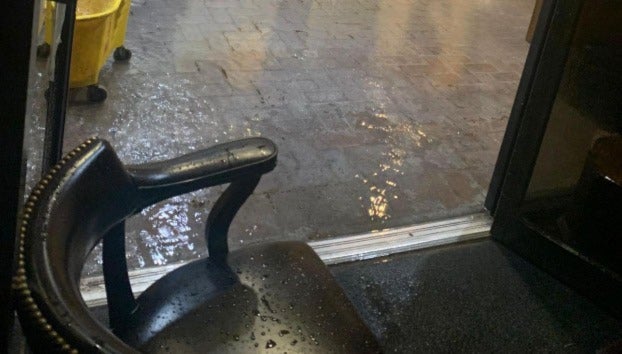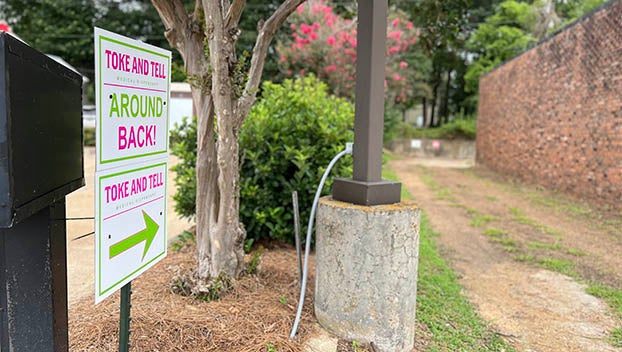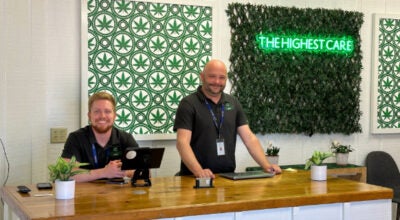Farmer aims to produce largest harvest in nearby parishes
Published 8:17 am Saturday, August 17, 2013

JAY SOWERS | THE NATCHEZ DEMOCRAT
Farmer Abner Blaylock, far right, looks over his 3-acre plot of 4,000 tomato plants in Ferriday with LSU AgCenter Extension Agents Dennis Burns, far left, and Sarah Nuss, while his son, Stephen, center, looks on.
Ferriday — A 3-acre plot of land outside of Ferriday on U.S. 84 may be the largest tomato farm in a three-parish area.
The land contains 4,000 celebrity tomato plants, a variety that produces fruit measuring 4 inches across and weighing 8 ounces at full maturity.
The man behind the operation is Abner Blaylock, a former registered nurse who chose to switch careers and return to farming.
Prior to his nursing career, Blaylock said he did some farming.
“Farming gives you a different outlook on life,” he said. “It takes some work, but it’s a way of life that I enjoy.”
He estimated that the plants would produce 40,000 pounds of tomatoes at harvest time, if the season goes well.
“I’d say it’s quite unusual for someone to grow that many plants in one spot,” Blaylock said. “I don’t think that anyone in Concordia Parish or nearby parishes grow tomatoes at that scale.”
He may be right.
Tomatoes aren’t even listed in the LSU AgCenter’s yearly summary of Concordia Parish Agriculture. Catahoula Parish produces a total of 23,600 lbs of tomatoes, valued at $15,842, according to the 2012 summary, while Tensas Parish’s total production equals Blaylock’s expected production — valued at $26,851.
LSU AgCenter Tensas Parish extension agent Dennis Burns said Blaylock’s venture is unusual because most farmers choose row crops over more labor-intensive crops, such as tomatoes.
“Most farmers around this area concentrate on cotton, soybeans or corn,” Burns said. “Picking tomatoes requires everything to be done by hand.”
The potential output isn’t the only unusual part of Blaylock’s farming adventure. He is also using a new technology to grow crops more efficiently.
One of Blaylock’s methods is called fertigation.
Concordia Parish extension agent Sara Nuss explained fertigation as a more efficient way to deliver fertilizer and water to the crops.
Nuss said farmers typically use a sprinkler or a drip line, which drips small amounts of water onto the plant.
“It’s not nearly as efficient as fertigation,” she said. “This will deliver water and fertilizer in one package. It should save a bit of money, too.”
Another innovative technique is plastic covering that surrounds his rows of tomato plants.
The covering is white, reflecting sunlight and keeping the soil cool, and black on the bottom to stop weeds from growing.
Blaylock began planting on July 20 and expects to harvest in October.
Though Blaylock is preparing to produce tens of thousands of pounds of tomatoes, he hasn’t secured a distributor. Instead, he plans to set up a vegetable stand on the roadside.
“Because I am on the highway, I think that’ll be a good amount of traffic coming through,” he said. “Who knows, because I have such a good spot, maybe I’ll try some other things here.”
Blaylock said he plans to expand his vegetable farming operation after harvesting tomatoes to include sweet corn, cabbage, lettuce and peas.
This isn’t Blaylock’s first venture into tomato farming.
He grew 600 tomato plants on a small plot of land in Monterey this summer.
“It was fairly successful,” he said. “It was kind of a trial. I’m hoping to use that as experience for this larger operation.”





